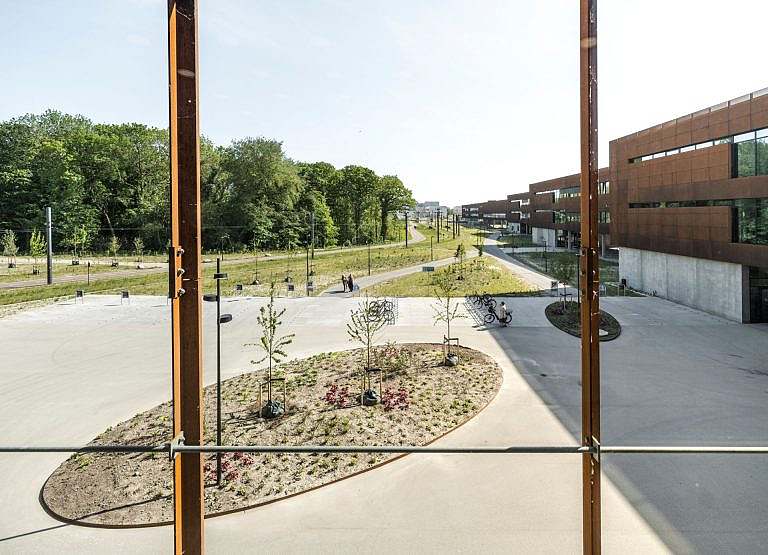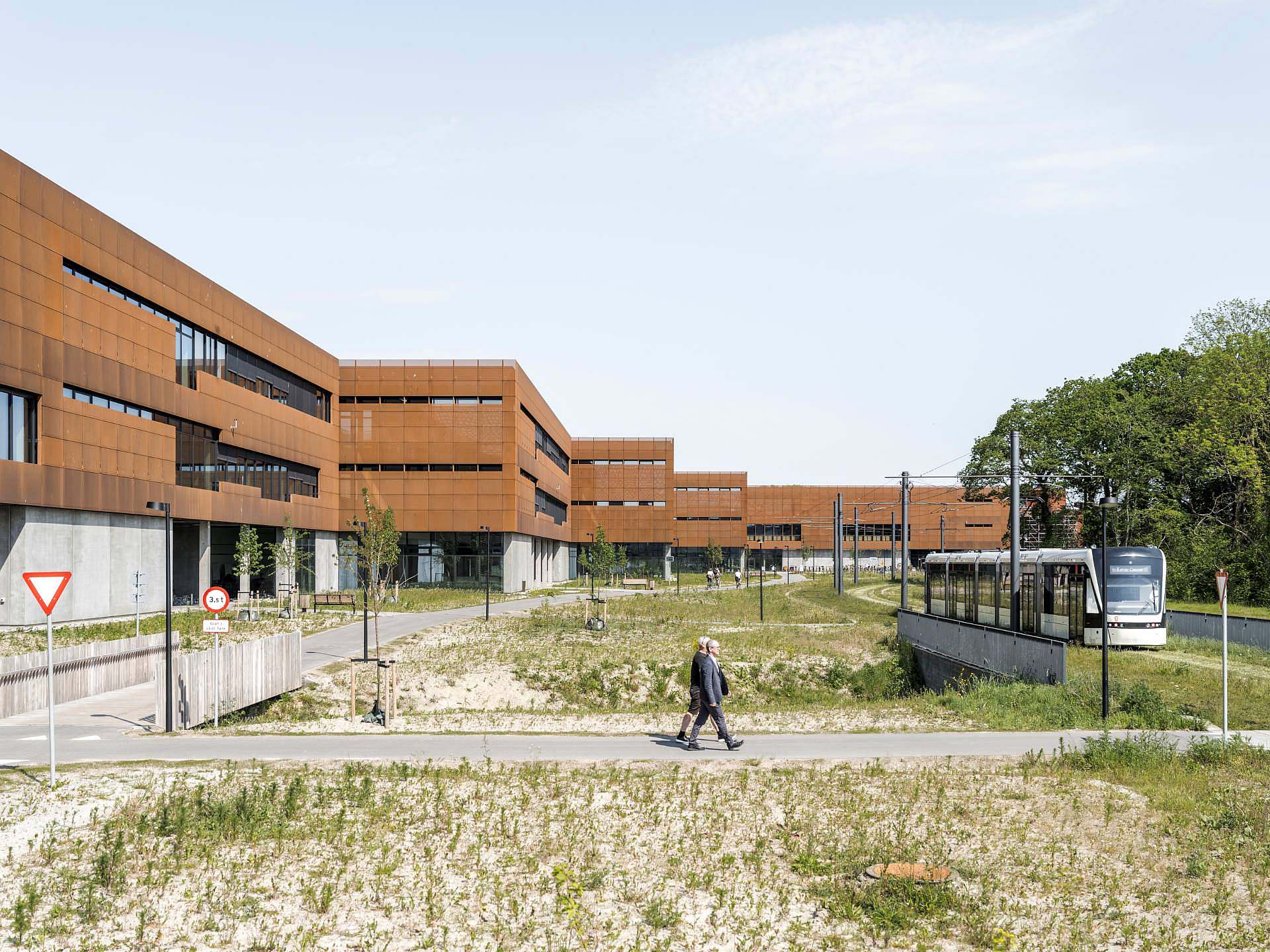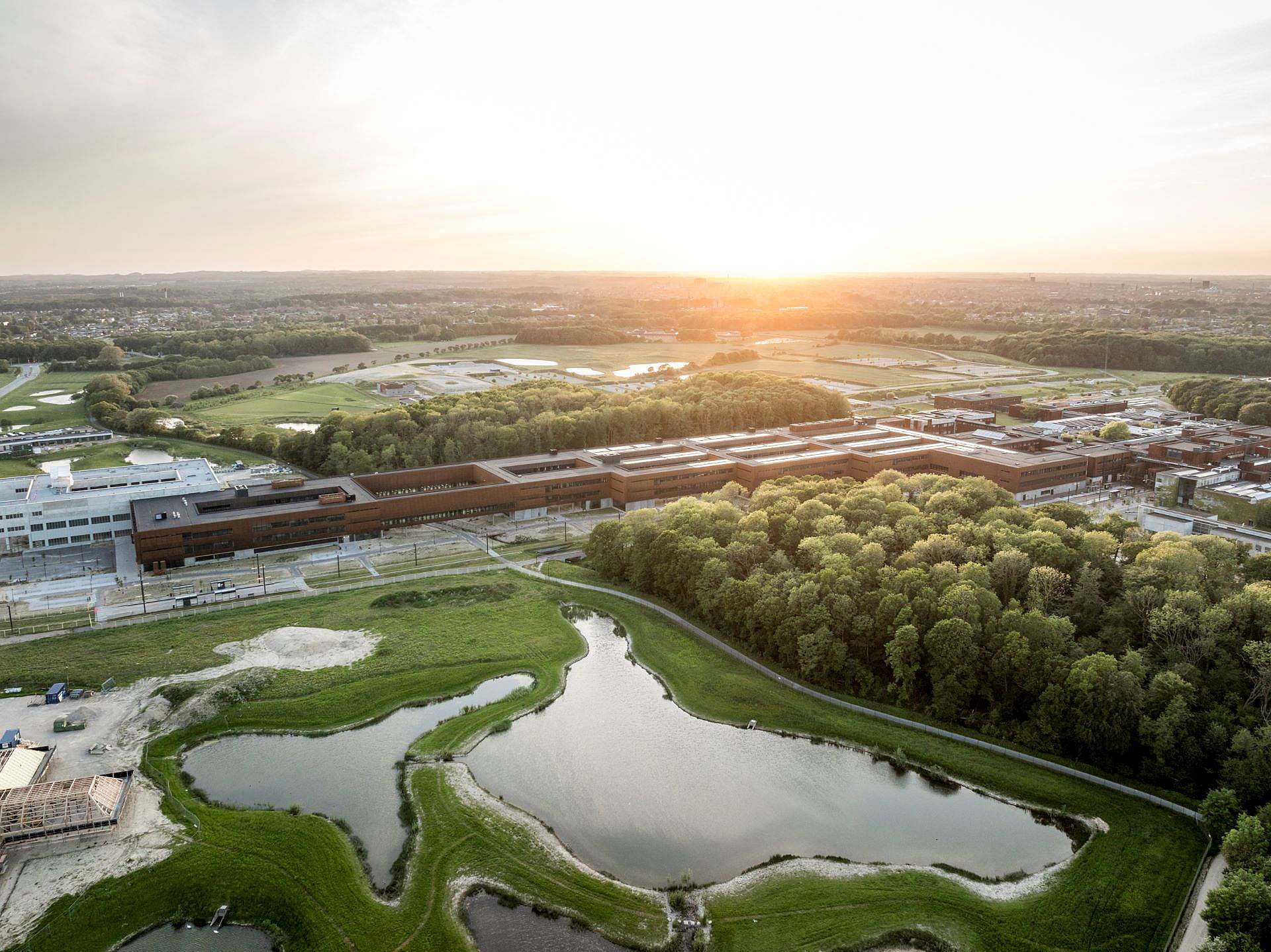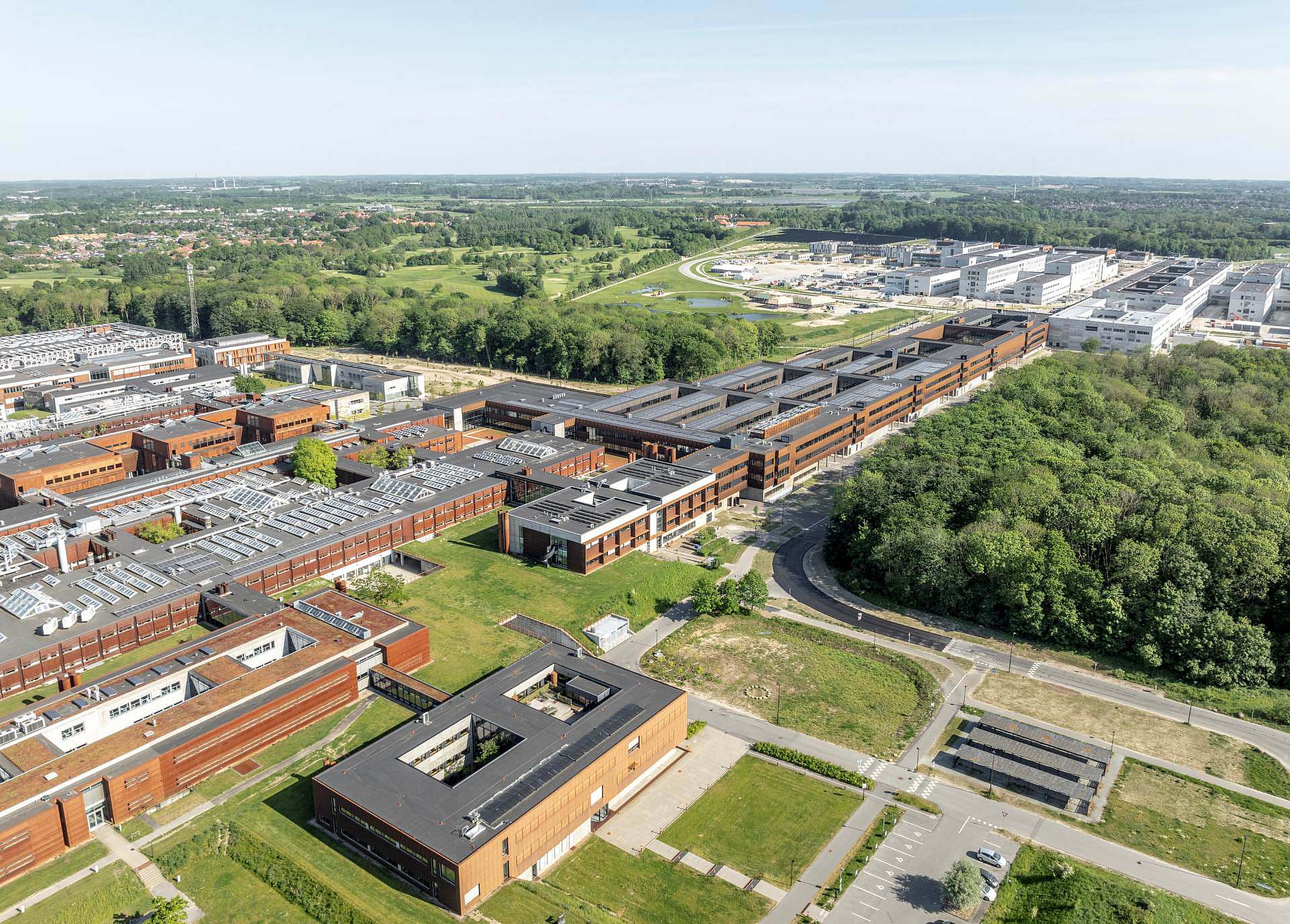The expansion of SDU with the Faculty of Health and Medical Sciences is based on a continuation of SDU's clear building structure and architectural idiom, which KHR Architecture created back in the 1970s. The new faculty building connects New OUH with the existing SDU. The merger of the Faculty of Health Sciences and the university hospital will promote collaboration between practice and research and thus provide optimal conditions for education, research and innovation in the healthcare sector. New HEALTH and New OUH is a research and hospital project totalling 275,000 m2 and a construction sum of DKK 6.3 billion.
Odense
Denmark
Road Directorate
2023
50 000 ㎡
DKK 1.3 MIA
EKJ Consulting Engineers, Dall & Lindhardtsen Architects
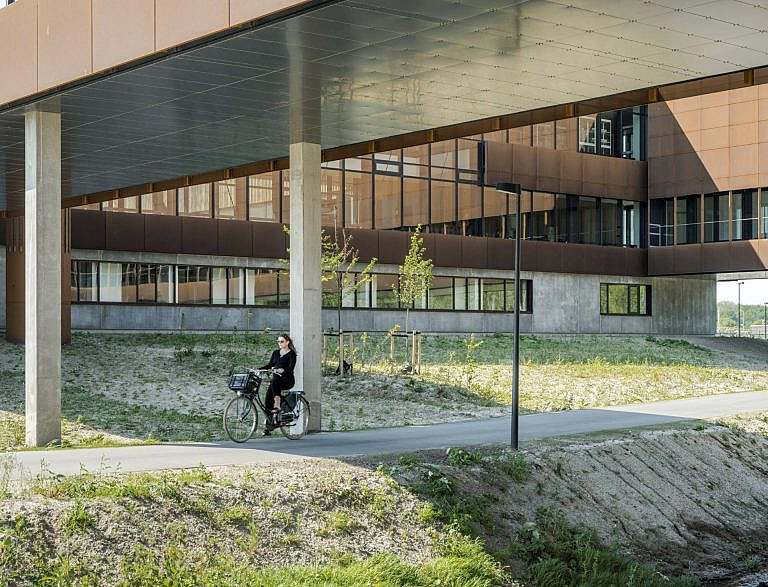
The knowledge axis links education, research and practice through a natural flow
At NewSUND there are no boring corridors. Students and researchers move between classrooms, break areas, meeting places and study zones from north to south in the so-called "Knowledge Axis", enjoying beautiful views of the landscape outside, which are drawn in through large windows.
To the west are the institutes' laboratories, in the centre office areas and to the east a varied corridor with teaching rooms and break and lounge areas that is wide enough to accommodate the human flow in the Knowledge Axis. SUND's laboratories are directly connected to OUH's laboratories to the south.
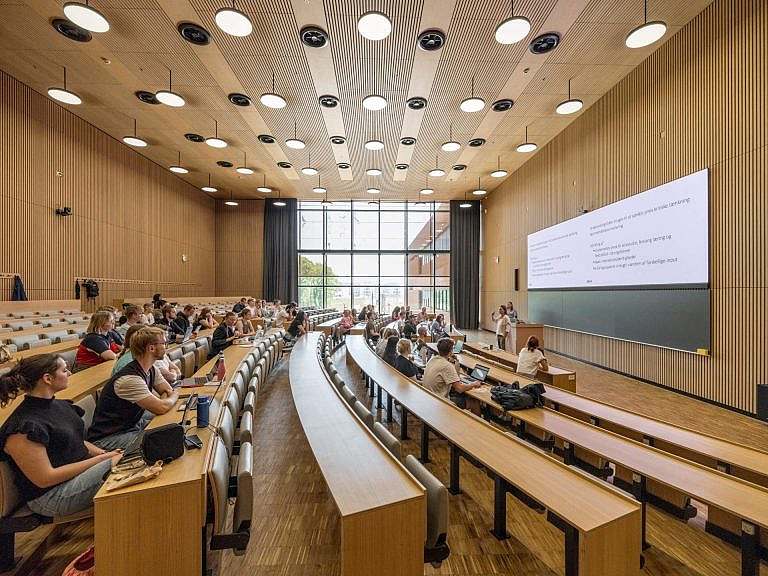
Facade with corten creates coherence
KHR Architecture is also behind the original University of Odense with its distinct structuralism and a characteristic facade in beautiful corten steel.
By using corten as the facade cladding on Nyt Sund, a connection is created between the original part of the university and the new faculty building, which was officially inaugurated on 1 March 2024.

Best conditions for a world-class research environment
The Faculty of Health Sciences has 5,000 students across 26 study programmes. In terms of research, the faculty offers several world-leading research environments, which will have even better conditions with the new facilities.
The joint functions and the close link from basic research to the clinic, which the combination of university and university hospital supports, provide favourable conditions for translational research that are found in only a few places in the world.
The architecture builds a bridge between SDU and OUH and gives space to nature
A wide building body is placed as an extension of the Department of Molecular Medicine and at the same level as SDU's ground floor, which corresponds to Level 2 in NytSUND. The building will float one storey above ground level, allowing for a crossing of Killerup Rende that interferes as little as possible with nature and otherwise allows unhindered passage under the building throughout its entire extent.
This provides space on the ground for outdoor activities in the green as well as a covered bicycle and car parking.
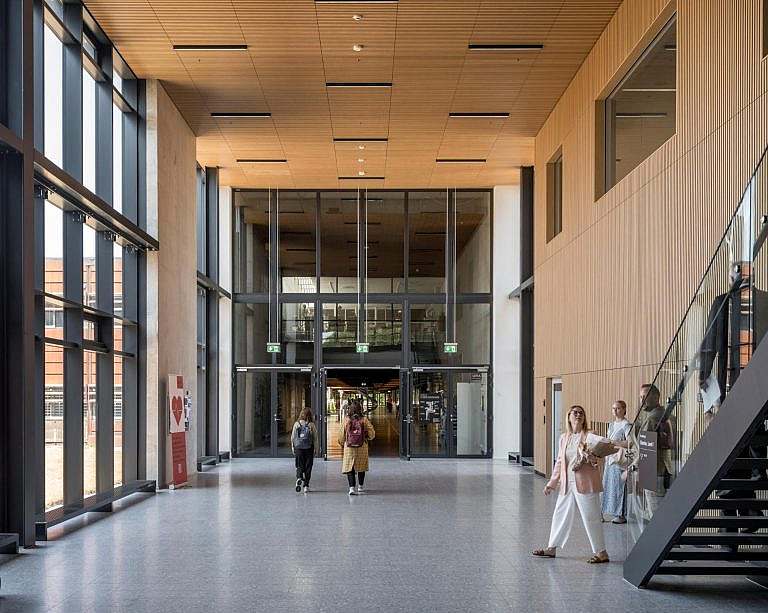
"The architecture of NytSUND supports the ambition to set new standards as an educational and research environment. The plan and flow of the building supports cross-collaboration and provides flexibility to meet the changing needs of a dynamic organisation."
Janina Zerbe, Creative Director and Partner of KHR Architecture
Contact
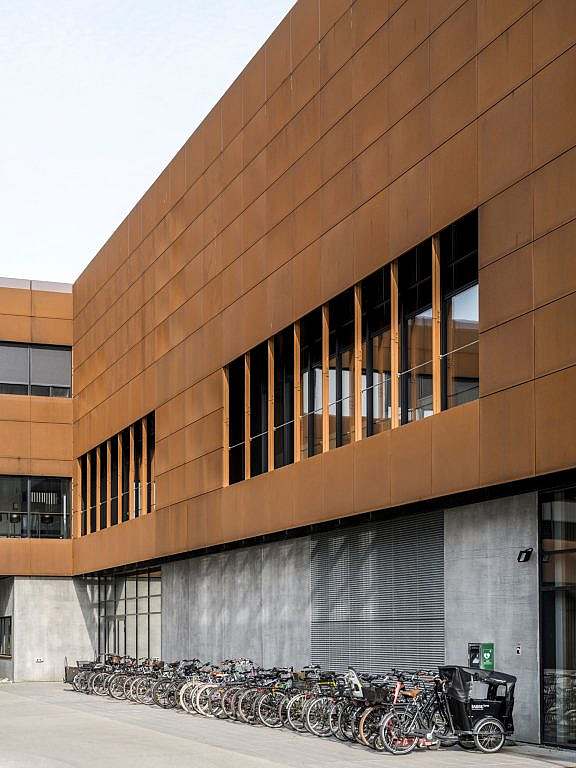
Adaptive architecture
Both laboratories and office areas are built around flexible standard modules, so units can be customised or research groups can swap spaces if needs change. This ensures a high utilisation rate and supports the dynamic development of the faculty's research.
The lab track and office track are connected by cross corridors with space for informal meetings and real meeting rooms. The cross corridors also connect the laboratories and offices with the teaching areas in the eastern track. Part of the university hospital's research is located at SUND, while some of SUND's laboratories will be located in New OUH close to the clinical functions.
